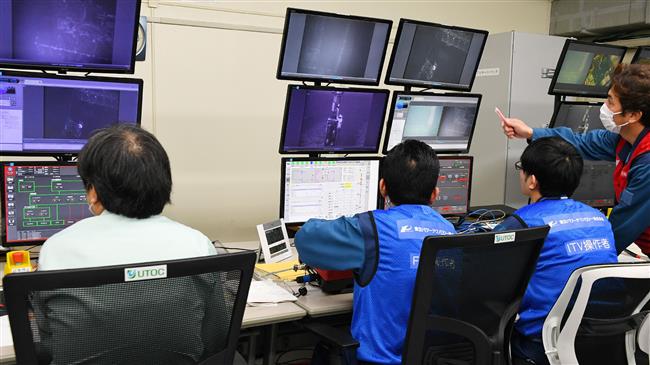Removal of fuel at Fukushima's melted reactor begins
The operator of Japan's crippled Fukushima power plant on Monday began removing atomic fuel from inside a building housing one of the reactors that melted down in 2011.
The delicate operation represents the first time the Tokyo Electric Power Co (TEPCO) has pulled out fuel from inside a highly contaminated building containing the melted-down reactor, and comes four years behind schedule.
Due to high radiation levels, technicians used remote-controlled equipment to haul fuel from a "storage pool" inside the building.
Operations were briefly suspended early Monday afternoon after a problem with the equipment removing the fuel, but resumed shortly afterwards.
TEPCO estimates it will take two years to remove 566 units of nuclear fuel, most of which are already spent.
Engineers have had to contend with clearing earthquake debris inside the building and an array of other technical challenges, said TEPCO spokeswoman Yuka Matsubara.
"We had to proceed carefully (to remove debris), and we needed to take measures as dust would waft up and increase radiation readings," she told AFP.
TEPCO engineers will not yet attempt to extract molten nuclear fuel that remains deep inside the mangled reactor. This is considered the most difficult part of the massive clean-up operation and is not expected to begin until 2021.
In February, TEPCO sent a remote-controlled probe to pick up pebble-sized pieces of the melted fuel in a bid to find out whether the material could be moved.
The next step in that painstaking process will be to remove some of the fuel as a sample, which is scheduled to happen by March 2020.
The company also faces other difficult challenges, including working out how to dispose of large quantities of contaminated water stored in containers at the plant site.
In the worst nuclear disaster since Chernobyl in 1986, reactors one, two and three at the Fukushima Daiichi power plant melted down after a deadly earthquake and tsunami that struck Japan in 2011.
The tsunami killed around 18,000 people and caused widespread devastation, and the nuclear meltdown forced the evacuation of areas near the plant.
Reactors four through six were offline at the time of the disaster for inspections and did not suffer meltdowns, though reactor four was damaged by an explosion in the days after the tsunami.
In December 2014, TEPCO finished removing all 1,535 units of nuclear fuel kept inside the storage pool at reactor four.
The company aims to conduct the same operations for the buildings for reactor one and two by 2023 as part of a four-decade plan to dismantle the entire Fukushima plant.
Japan's government has pushed a reconstruction plan for the surrounding region that includes decontaminating affected areas and removing topsoil.

This month, an evacuation order was lifted for part of Okuma, one of two towns where the nuclear plant is located.
But regions affected by the disaster have struggled to attract back residents who fled in the wake of the meltdown, with many still concerned about radiation despite government assurances.
(Source: AFP)
Venezuelans will defend their independence in face of unlawful US moves: Iran FM
VIDEO | Millions of Afghans facing severe hunger amid aid cuts
Iran labels Royal Canadian Navy a ‘terrorist organization’ over IRGC designation
Palestine Action hunger strikers near death
VIDEO | Haibat al-Halbousi elected as speaker of Iraqi Parliament for four years
Assassination of Gen. Soleimani aimed at dismantling resistance security order: Iranian envoy
Extreme cold kills 25 Palestinians, including children, in Gaza in December
VIDEO | Press TV's news headlines










 This makes it easy to access the Press TV website
This makes it easy to access the Press TV website